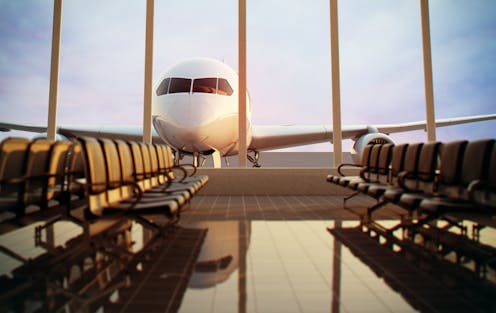 Shutterstock
ShutterstockNew Zealand’s border restrictions will come with significant job and business losses in the tourism sector, both at home and in the Pacific. But the new travel rules are absolutely necessary to protect the health of New Zealanders and people right across Pacific Islands, because New Zealand is a gateway country for many travellers entering the region.
Health systems in Pacific Island countries are under-resourced and people often live communally, putting them at greater risk of transmission. New Zealanders have good reason to be particularly aware of this because of the Samoan measles outbreak in late 2019, which claimed 83 lives. It is likely that the disease came into Samoa from someone travelling from Auckland.
Speaking at the University of the South Pacific in Suva last month, Prime Minister Jacinda Ardern promised New Zealand would assist with issues such as climate change and infectious diseases because they are “borderless challenges and they demand a collective response”.
Drawing from the experience of the measles outbreak, Samoa announced in January that visitors would only be allowed into the country if they had medical clearance within three days before travelling.
This weekend, Samoa’s rules became even stricter. Travellers from 33 countries where COVID-19 has been spreading – including Australia - now have to self-quarantine for 14 days before arrival and show evidence of a clear COVID-19 test no older than five days.
The economic hit to NZ’s biggest export earner
Tourism is New Zealand’s biggest export earner, contributing 21% of foreign exchange earnings and 5.8% of GDP. The industry has thrived in recent years and employs 229,566 people.
Within a day of the new border rules, Air New Zealand announced cuts to services to the US, Canada, Argentina, Japan and the UK and confirmed it is looking to reduce staff by up to 30%, with 3750 people affected.
Read more: NZ's decision to close its borders will hurt tourism but it's the right thing to do
Ardern’s border control announcement is devastating news for many tourism businesses. Some are already struggling because Chinese tourists were barred from entering New Zealand at the start of February. Now most tourists will be cancelling or postponing travel plans, and some tourism businesses may go under.
Tourism Industry Aotearoa chief executive Chris Roberts has called on the government to support the mental health needs of both tourism employers and employees during this “incredibly stressful time”.
How NZ’s travel restrictions will affect Pacific tourism
Tourism is also vital to small economies in the Pacific - it delivers between 10% and 70% of GDP in eight South Pacific Island states.
New Zealanders and Australians are the major international markets for tourism in Fiji, the Cook Islands and Samoa, and currently both governments have warned against any non-essential international travel. In addition, many Pacific countries closed their doors to China some weeks ago, and the impacts from that are already evident.
In particular, Samoa is suffering. It has been dealt a double blow with the measles outbreak a few months ago and now this pandemic. The chief executive of the Samoa Tourism Authority, Fa'amatuainu Lenata'i Suifua, predicts earnings from tourism this calendar year will be half of their usual level.
He told me he fears for the 5,000 people employed in the sector, and for some businesses which are struggling to service their loans. But he believes the travel restrictions are necessary.
The common talk here is that we can always get money back, but once there’s a loss of life you’ll never have that back again, especially in a culture that values its elders.
Read more: Coronavirus weekly: expert analysis from The Conversation global network
How tourists can help with post-COVID-19 recovery
For now, New Zealanders and Australians should take the government’s advice not to travel internationally for non-essential reasons. Instead, they can support tourism businesses at home.
Exploring our own backyards and reconnecting with nature and culture could be a great way of getting through the challenging times ahead.
Read more: To limit coronavirus risks on public transport, here's what we can learn from efforts overseas
In the medium term, tourist dollars from Australia and New Zealand could help in the recovery from this health crisis. If possible, people should postpone rather than cancel travel plans for the Pacific.
The well-established rule is that tourists should avoid places during the immediate period of a crisis or disaster but return to support the recovery phase to rebuild economies and lift the population through bringing back a sense of normalcy.
In the wake of COVID-19, people from around the world will still want to travel – and if New Zealand and Pacific countries manage to contain COVID-19 relatively well, this might add to our value globally as safe places to travel.
* Stay in touch with The Conversation’s coverage from New Zealand experts by signing up for our weekly newsletter – delivered to you each Wednesday.
Regina Scheyvens does not work for, consult, own shares in or receive funding from any company or organisation that would benefit from this article, and has disclosed no relevant affiliations beyond their academic appointment.
Authors: Regina Scheyvens, Professor of Development Studies, Massey University
| < Prev | Next > |
|---|








